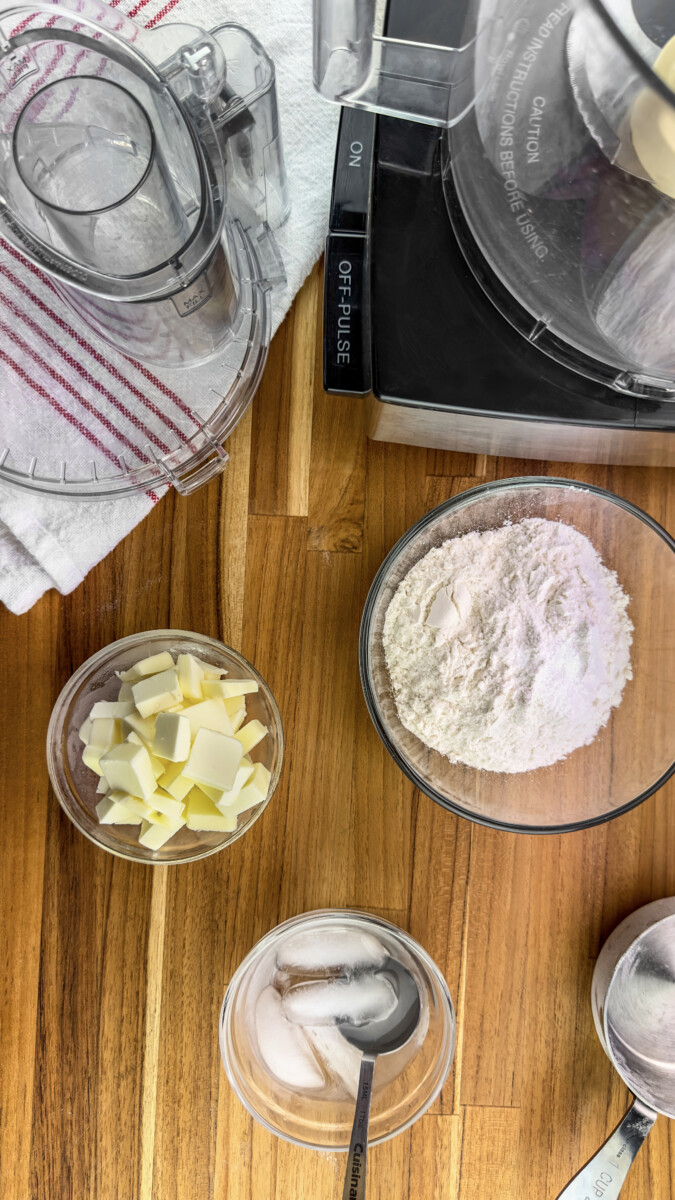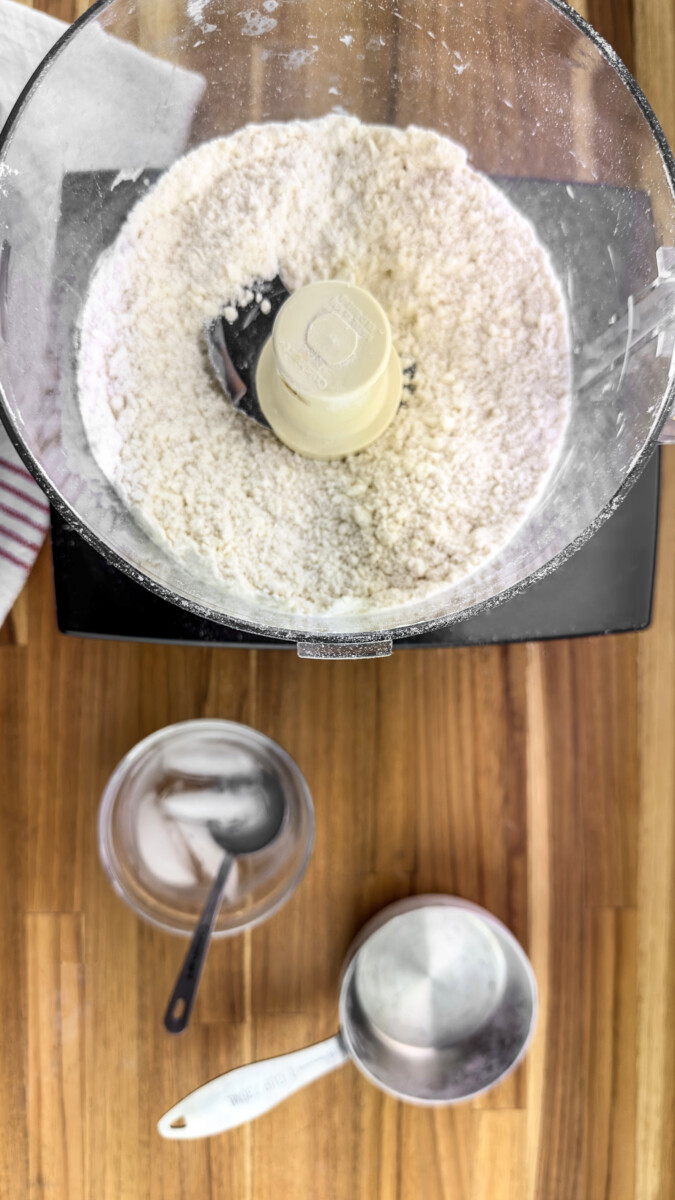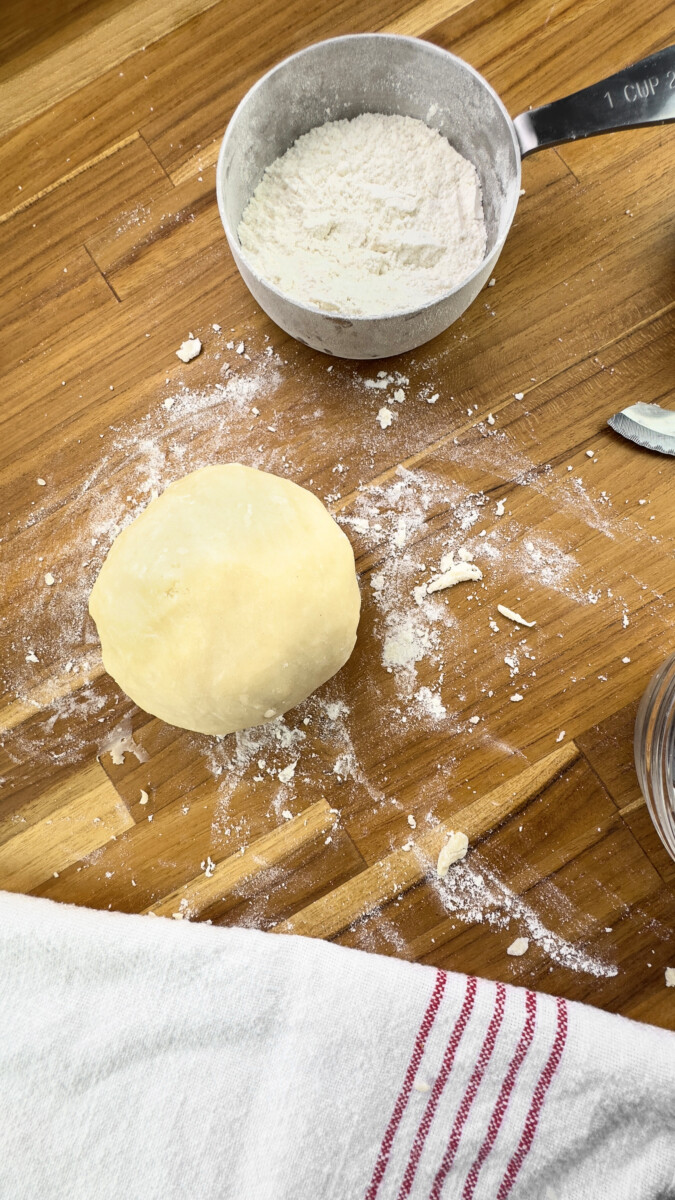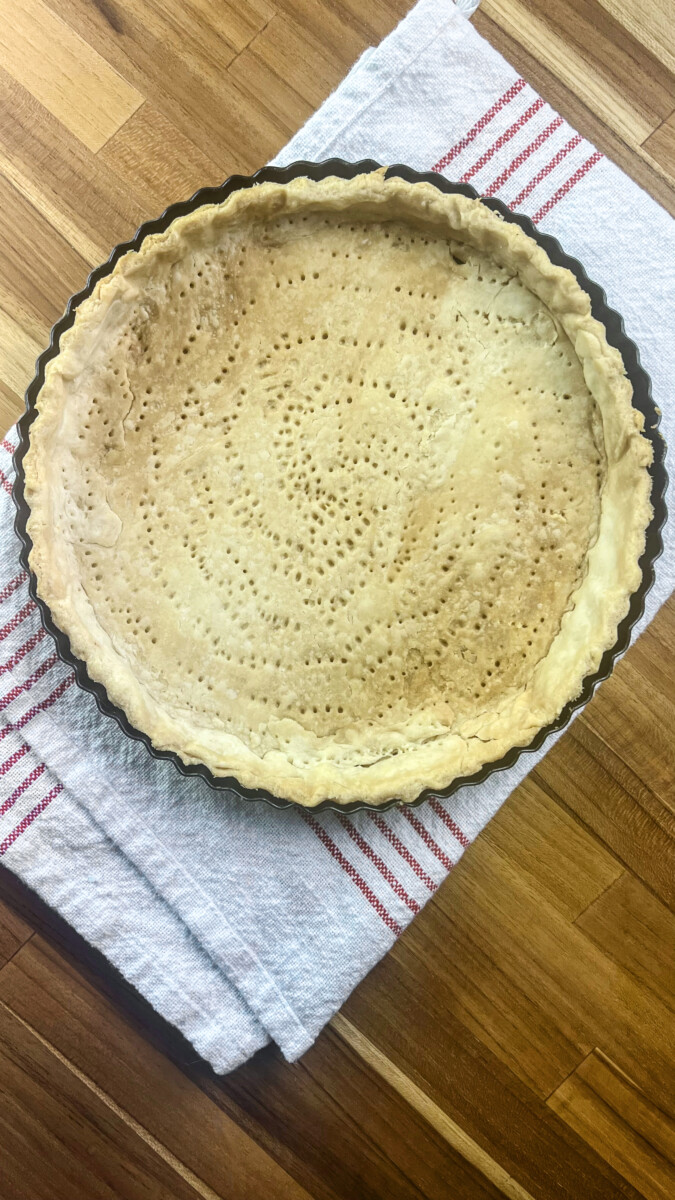There’s nothing quite like a perfect quiche dough – buttery, flaky, and oh-so-delicious. In this recipe, we’ll show you how to make a foolproof quiche crust that will impress your guests and elevate your favorite quiche recipes to the next level.
Table of Contents
You’re in the right place if you’re looking for a simple and quick quiche dough recipe to pair with my Mediterranean Quiche: With Fresh Herbs & Peas. With over a decade of experience running a café and baking from scratch, I’ve perfected this easy quiche crust recipe. I used to make individual-sized quiches daily, and that experience led me to create the perfect flaky dough. Your quiche’s foundation, the crust, is essential for a delicious dish, and I’ll guide you through making it effortlessly.
Simple Ingredients to Make Quiche Dough:
- All-Purpose Flour: All-purpose flour’s foundation of the quiche dough offers a neutral yet slightly nutty flavor profile. It forms the base for the dough, providing structure and a delicate crumb texture.
- Unsalted Butter: Cold, cubed, unsalted butter contributes a rich, buttery, and slightly creamy flavor to the quiche dough. It’s essential for creating a tender and flaky pastry texture, while its cold temperature helps create layers within the dough during baking.
- Ice Water: Ice water is a critical component of the dough, ensuring it remains cold during mixing. While it doesn’t add flavor, maintaining the butter’s coldness is crucial for achieving a perfectly flaky crust.
- Salt: Salt serves as a flavor enhancer, bringing out the dough’s natural buttery and nutty notes while providing a subtle savory balance to the overall flavor profile. It also helps to strengthen the dough’s structure.
Easy Steps for Flaky Dough
Several essential things must be considered when making pastry dough for quiche. Firstly, making the best quiche dough requires attention to detail and the proper technique. Secondly, good quiche dough should be flaky, buttery, and hold its shape without being harsh or rubbery.
In this quiche dough recipe, we will combine flour, butter, and water to create a dough that is easy to work with and yields a delicious crust every time. I used a food processor for a faster process. If you don’t have one, use a pastry cutter or your fingers, blend the flour and the cold butter until the mixture resembles coarse breadcrumbs, then add the ice water and mix until this easy quiche dough recipe comes together. Knead the dough to become smooth, but do not overwork it. Form into a dish, wrap, and refrigerate for 30 minutes before use. Please read more about simple tips to remember in the tips and notes section below.
Blind Baking vs. No-Bake
Blind baking is baking a pie or quiche crust without filling, usually for a short time, to set the dough and prevent it from becoming soggy when filled with wet ingredients. This is particularly important for custard-based pies like quiches, where the filling can be quite moist and may cause the crust to become mushy if not pre-baked. To blind bake a quiche crust, first line the dough with parchment paper or aluminum foil and fill it with pie weights, dried beans, or rice to hold it down and prevent it from puffing up during baking. Then, bake the crust in a preheated oven for 10-15 minutes until it sets and is lightly golden in color. After this, you can remove the weights and continue baking the crust with the filling.
On the other hand, baking the quiche crust after adding the filling means the crust will bake along with the filling. This can be done for individual pies, like fruit pies, whose packing is not as moist and doesn’t require pre-baking.
Quiche Filling Ideas for Baked and Not-Baked Dough
For Baked Quiche Dough:
- Quiche Lorraine – bacon, onion, and gruyere cheese.
- Spinach and Feta Quiche – spinach, feta cheese, and nutmeg.
- Mushroom and Gruyere Quiche – sautéed mushrooms, gruyere cheese, and thyme.
- Tomato, Basil, and Mozzarella Quiche – sliced tomatoes, fresh basil, and mozzarella cheese.
- Broccoli and Cheddar Quiche – chopped broccoli and cheddar cheese.
For Not Baked Quiche Dough:
- Lemon Cream Cheese Filling – cream cheese, lemon zest, and powdered sugar.
- Chocolate Ganache Filling – melted chocolate and heavy cream.
- Vanilla Custard Filling – vanilla extract, milk, eggs, and sugar.
- Caramelized Onion and Goat Cheese Filling – caramelized onions, goat cheese, and eggs.
Note that the fillings for a not-baked quiche dough are typically used for a dessert tart or pie, as the crust is not baked in advance.
I’m sure you’ll find this the best quiche dough recipe and simple to follow, whether you’re looking for a pie dough recipe that is easy to make or, specifically, a quiche crust recipe that’s quick and easy. Suppose you need more information on making dough for quiche. Check out my additional tips below! Also, check out the ultimate- deep-dish apple pie. and our Pumpkin chocolate tart recipes that you will fall in love with if you have a special occasion. Or just a few friends over.
Preparation




Turn the dough onto a floured surface and knead it lightly until it forms a smooth ball. Wrap it tightly in plastic wrap.
Chill the dough in the refrigerator for at least 30 minutes before rolling it out. This will allow the gluten to relax and prevent the dough from shrinking during baking.


Using a fork, poke the bottom of the dough all over but try not to go poke through. This will prevent the dough from puffing up when blind baking.

Finally, pre-baking for about 10-15 minutes at 375°F. Remove the beans and parchment paper and bake for 5-8 minutes.

Ingredients:
Adjust Servings
| 1 1/2 cups all-purpose flour | |
| 8 tablespoons unsalted butter, cold and cubed | |
| 3 tablespoons ice water | |
| 1/4 teaspoon salt |
Preparation
Recipe Tips & Suggestions
Some tips to follow:
Rana’s Notes!
Nutrition Information
The information shown is an estimate provided by an online nutrition calculator. It should should not be considered a substitute for a professional nutritionist's advice.
See our full nutrition disclosure here.








I would love to hear your experience!
Have you made this flaky quiche dough? I love to know your feedback. Please feel free to leave me a comment. I’ve included it below.